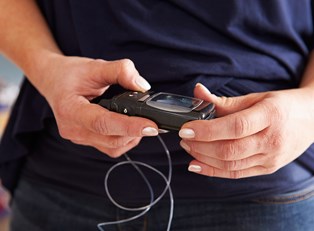We need certain amount of sugar in our bodies, in our blood, but some blood sugar information we need to consider is that there is such a thing as too much blood sugar or too little of it. So what is it all about?
Blood Sugar Levels
There is a level of blood sugar that needs to be maintained within a certain range, which is between 3.6 to 5.8 millimoles per liter. More blood sugar (which is synonymous to blood glucose or glycemia) is known as hyperglycemia, and less blood sugar results in hypoglycemia. Both are not good for our health. Hyperglycemia is the main reason behind diabetes where the blood glucose level needs to be decreased. Glycemia is driven by several physiological processes. The blood glucose level rises to the higher range after one partakes of food, due to the consumption of carbohydrates. The glucose decreases as a result of catabolism, especially on account of one's high temperature, physical activity and stress. The abundance of blood glucose is transformed into glycogen or triglyceride for the purpose of accumulating energy. Glucose is the most important source of metabolic energy for the majority of cells, specifically for some particular cells (for instance neurons and erythrocytes), which almost entirely depend on the level of glucose. Some other basic blood sugar information to keep in mind is that the glucose concentration at the level of below 3 or over 30 millimoles per liter may result in unconsciousness, convulsions and coma.
Symptoms of Abnormal Blood Sugar Levels
Since high and low blood glucose levels are so diametrically different, we will pay attention to the symptoms of hypoglycemia. Due to obsession with losing weight, there have been quite a lot of people, especially women, trying out various diets. However, some blood sugar information needs to be heard: it's not hard to "earn" hypoglycemia by eating little. Here are some of its symptoms: weakness, vertigo, irritability, headaches, breakdown, nausea, tinnitus, and loss of consciousness. All these describe the condition of many who do intense physical exercises on an empty stomach. Blood sugar shortage may at times be the worst of two evils, since glucose is food for brain. Usually the level of glucose gradually rises after a meal and also is gradually reduced thanks to the secretion of insulin. If, however, sugar suddenly skyrockets, and then suddenly drops, chances are you are dealing with hypoglycemia. And it's an easy task to diagnose it right after the meal, eat a lump of sugar. If this little amount of sweets helps you cope with nausea and vertigo, it then means that the symptoms were caused by abrupt decline in blood sugar, which points to hypoglycemia.
Treatments for Abnormal Blood Sugar Levels
It is important to keep this blood sugar information at hand: the one suffering from hypoglycemia may self-medicate himself by introducing 15 grams of carbohydrates, which is equal to 120 grams of regular fruit juice. The hypoglycemic should also adhere to this piece of blood sugar information: make sure to check your blood glucose level before driving, as in the case of sudden drop it may cause a car crash. If the person suffering is unable to take anything due to his condition, he should infuse dextrose intravenously. The main idea behind hypoglycemia treatment is to raise the blood sugar level to what it needs to be and as much as it is possible to prevent it from happening again. Thankfully, there is a wide range of blood sugar information available and much more medicine is available to help fight this "sweet" disease.



